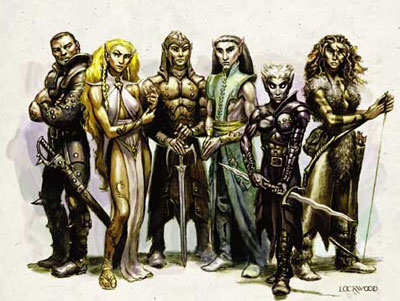Elves
Posted: Tue Apr 20, 2010 4:58 am
The fantastic Races of Faerûn, a joint effort overseen by Eric L. Boyd, Matt Forbeck, and James Jacobs, opens with the following:
Below, we cover elves (from drow to wood elf). In similar threads, we look at dwarves (gold, gray, and shield), gnomes (deep and rock), halflings, half-orcs, humans, planetouched, and gray orcs. It is our hope that the information provided here will allow you to make the most of your roleplaying experience.
In BALDUR'S GATE: THE SWORD COAST CHRONICLES we try to accurately reflect the setting's wonderful diversity of races by allowing players to select from a vast number of character races (24 to be exact). Because not everyone who plays here has access to the same amount of information, this thread, its subsequent posts, and its related threads, exist to give you a solid introduction to the races that you can elect to play:Faerûn is home to hundreds of intelligent peoples, divided into thousands of tribes, clans, nations, and ethnicities. Some of these races are monstrous predators armed with terrible powers and some are bloodthirsty marauders who terrorize more civilized folk, but most are good-hearted folk who wish to live in peace in whatever manner they find most prosperous and fulfilling. This great diversity in physical nature, magical talent, beliefs, and values creates an incredible patchwork of cultures that spans the entire continent, a tapestry so complex and wondrous that no one mortal can hope to ever comprehend it in its entirety. (Page 3)
Below, we cover elves (from drow to wood elf). In similar threads, we look at dwarves (gold, gray, and shield), gnomes (deep and rock), halflings, half-orcs, humans, planetouched, and gray orcs. It is our hope that the information provided here will allow you to make the most of your roleplaying experience.

